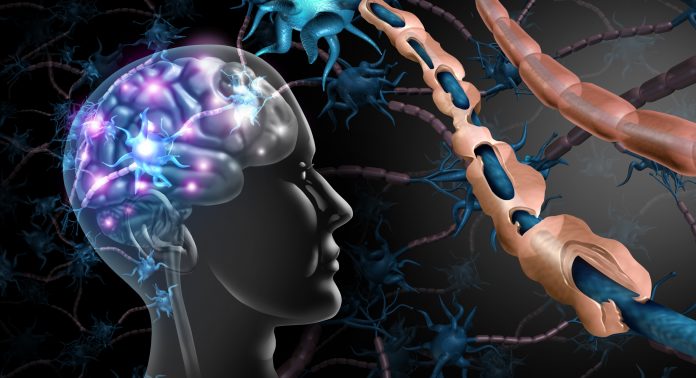
New research led by investigators at Uppsala University in Sweden shows emerging evidence that autologous hematopoietic stem cell transplantation (aHSCT) may be a suitable treatment for relapsing-remitting multiple sclerosis (MS). Relapsing-remitting MS (RRMS) is characterized by distinct inflammatory episodes that result in varying degrees of disability. The symptoms will resolve only to return again, with symptoms often more debilitating than in previous episodes. Most patients with RRMS will eventually progress to secondary progressive MS.
The research was published Monday in the Journal of Neurology Neurosurgery & Psychiatry.
While the are more than a dozen disease modifying treatments approved by the FDA, they mostly serve to slow down progression of the disease. The researches in Sweden, however, wanted to find if aHSCTs—which are typically used to treat various forms of blood cancer—could put a halt to MS symptoms.
In their study the investigators identified 231 patients with RRMS, 174 of whom had been treated with aHSCT before 2020. The earliest treatment of a patient in the cohort was received in 2004, the average age of the patients was 31 with 64% of the patients women.
On average, patients had had their disease for more than three years and had received an average of two lots of standard treatment (disease modifying treatments) before aHSCT, while 23 had not had any treatment. On average, nearly three years after undergoing aHSCT, the patients were given a disease-modifying treatment.
To see how well the aHSCT treatment worked for relapsing-remitting MS, the team turned to data contained in the Swedish MS registry. To assess the safety of these treatments, they also collected electronic medical records for the patients for the 100 days following the aHSCT treatment.
After assessing the data, the researchers found that nearly three-quarters of all patients (73%) of those treated showed no evidence of disease after five years, and 63% showed no evidence of disease after 10 years. Among the 149 MS patients with some disability to begin with, 80 (54%) improved, just over a third or 55 patients (37%) remained stable, and around one in ten got worse.
The annualized relapse rate was 1.7 in the year before aHSCT and 0.035 during the average monitoring monitoring period of five-and-a-half years. This means that, on average, a patient had 1.7 relapses in the year before aHSCT treatment, and one relapse every thirtieth year after aHSCT treatment.
Regarding the safety of aHSCT, five patients required intensive care, and 61 developed a bacterial infection within 100 days of treatment. Febrile neutropenia (low white cell count accompanied by a high fever) was the most common side effect, affecting 68% of these patients. Other viral infections were verified in 23 patients; Herpes zoster reactivation was documented in three; and three had a confirmed localized fungal infection. None of the patients who received aHSCT died as a result of their treatment.
While this was an observational study with no control group for comparison, the researchers were nonetheless encouraged by what they had found in the data.
“Our findings demonstrate that aHSCT for [relapsing-remitting MS] is feasible within regular healthcare and can be performed without compromising safety,” the researchers wrote. “Our study corroborates the results observed in the only randomized controlled trial conducted to date. We believe that aHSCT could benefit a greater number of MS patients and should be included as a standard of care for highly active MS.”













